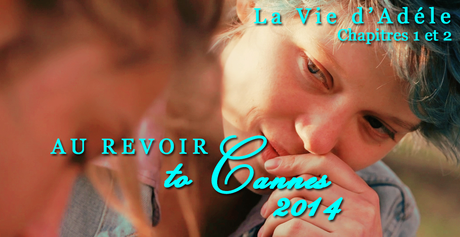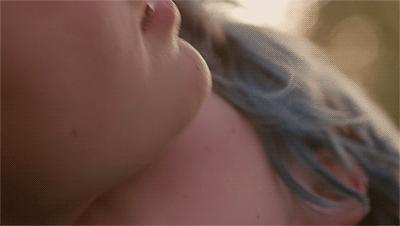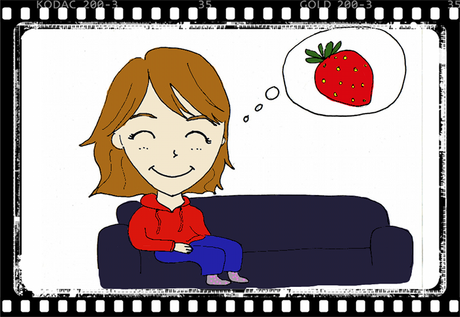
Yesterday was the last day of the 2014 Cannes Film Festival. It was also the day that I saw last year's Palme d'Or winner La Vie d'Adèle, Chapitres 1 et 2 or Blue Is the Warmest Color for the first time.
Do you remember the time when a beautiful, fresh French face made a short but effective appearance in Woody Allen's Midnight in Paris? Back then, it was still questionable whether there was more behind that intriguing smile. Not anymore - last year, Léa Seydoux (the actress behind selfsame smile) was awarded the Palme d'Or along with her director Abdellatif Kechiche and co-star Adèle Exarchopoulos. The two ladies are the only women to have won the award beside Jane Campion. Blue Is the Warmest Color is indeed a very feminine film that explores women in various ways. Firstly, there is the most apparent theme - homosexuality. The films main character, Adèle, finds out that being with men doesn't give her the same sort of satisfaction as being with a woman does. More so, there is one particular woman that Adèle falls head over heels in love with: the artistic and charming, blue-headed Emma. The two spend several years together as Adèle finishes high school and starts studying to be a teacher. Meanwhile, Emma is becoming an acclaimed artist and doesn't have as much time for her girlfriend anymore. After Adèle cheats on Emma with a male colleague, the two break up, leaving Adèle cold and lonely.

It's not suspense or an unusual story that sets Blue Is the Warmest Color apart from the other films of 2013, and it fits into the anti-story trend that we saw in Gravity, The Great Beauty, Inside Llewyn Davis and - to varying degrees - in other films of the year. In fact, this film is probably one of the best examples of that trend, and maybe that's one reason it won the Palme d'Or. The film is a simple story about relationships and emotions - yet it doesn't feel long after three hours. The characters are as real as people you know or have once known and it helps that Adèle pursues a profession as normal as that of a teacher, instead of following Emma's advice and becoming a writer. She says that drawing out story-lines isn't exactly her thing - and I can't help but get personal here and say Hell, yes! So many people have told me I should start writing a novel since I "write well" - but what if writing my diary, the blog and a couple of other non-fiction things satisfies me? What if I want to continue dabbling with poetry and write one good piece in ten years? But enough of that: Adèle Exarchopoulos and Lèa Seydoux truly deserve the Golden Palm Tree because they deliver the most realistic and natural performances since the Before films - and definitely cross more boundaries than Ethan Hawke and Julie Delpy ever did. However, it's not the graphic scenes that necessarily linger with you- it's small details like that shy smile after the first kiss, the way Adèle gulps down her food and the way Emma's gets angry.
Blue Is the Warmest Color isn't a perfect film but it's one of those things that everyone will find something to like - and perhaps love - in. It came at the perfect time to counter the anti-gay movement and discusses a topic that is still a tabu among many teenagers and even adults. Elevated by fantastic performances from two fast rising European stars, it is an essential film for everyone interested in contemporary cinema.
BLUE IS THE WARMEST COLORORIGINAL: LA VIE D'ADÈLE, CHAPITRES 1 ET 22013 • France/ Tunisia/ Belgium/ Spain • French/ Englishdirector Abdellatif Kechicheauthors (Julie Maroh), Abdellatif Kechiche, Ghalia Lacroix★ Adèle Exarchopoulos, Lèa Seydoux
 FINAL FRAME„It's incredibly enriching. Very interesting.“ - Adèle
FINAL FRAME„It's incredibly enriching. Very interesting.“ - Adèle
